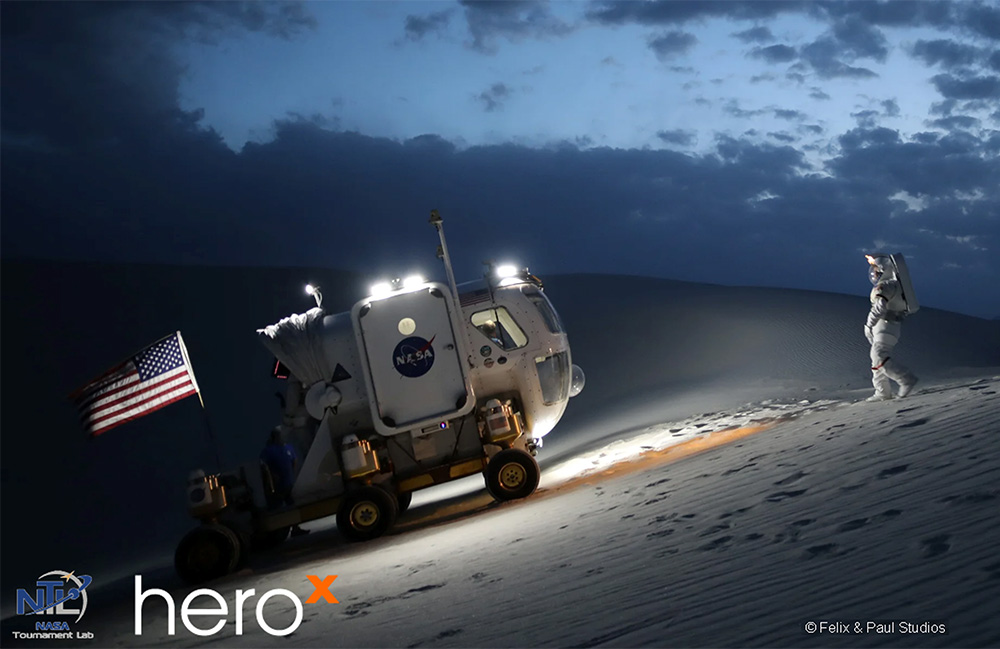HeroX today announced the pre-launch of the “Rock and Roll with NASA Challenge.” The challenge invites the global innovation community to use NASA’s small, semi-autonomous MicroChariot Rover as a testbed for designing and testing novel flexible, lightweight, and durable wheel and tire concepts.
NASA is returning to the Moon with the goal of enabling sustainable surface operations. A key piece of this vision could be next-generation wheel and tire technology that can withstand the harsh lunar environment while carrying payloads across rugged terrain.
There are three phases to this challenge. The first starts this fall with ideation and design. The prototyping phase will follow, stretching from winter to spring 2026. Finally, it will end with a demonstration phase in the summer of 2026.
Winning teams will push the entire lunar mobility ecosystem forward, helping to pave the way for future lunar missions, and may have their designs tested by NASA. The Rock and Roll with NASA Challenge invites participants to create an original wheel and tire design that meets NASA’s performance goals, explain the science behind it, and–if selected–build and demonstrate it.
The challenge will officially launch this fall and will award up to $150,000 in prizes across all phases combined. HeroX noted that technical requirements, prize amounts, intellectual property guidelines, and judging criteria will be detailed in the official challenge rules at launch. Until then, details are subject to change.
What is NASA looking for?
NASA said that rigid wheels can work for slow, careful driving, but higher-speed mobility requires wheels that can absorb shocks and impacts while remaining lightweight and long-lasting. NASA is looking for groundbreaking wheel concepts that balance low mass, high compliance (shock absorption), and extended service life on the Moon.
The concept should treat MicroChariot as a proving ground. Submissions will demonstrate how the same compliance mechanism, materials, and manufacturing approach could grow (or shrink) without re-tooling.
HeroX and NASA said crowdsourcing can uncover hidden gems from students, hobbyists, startups, and established firms. It said the winning teams will help shape the future of lunar mobility and may see their designs tested at NASA.
Finalist prototypes will be mounted to NASA’s MicroChariot Ground Test Unit (MCGTU) and tested at speeds up to 15 MPH. The MCGTU, a 100-lb. Earth-bound rover built to assist with development of the MicroChariot System and operational concepts, features a flat deck chassis (40-inch-long x 29-inch-wide x 5-inch-tall) designed for easy payload integration and runs four 19-inch diameter wheels.
The post NASA needs your help reinventing wheels for Moon rovers appeared first on The Robot Report.


